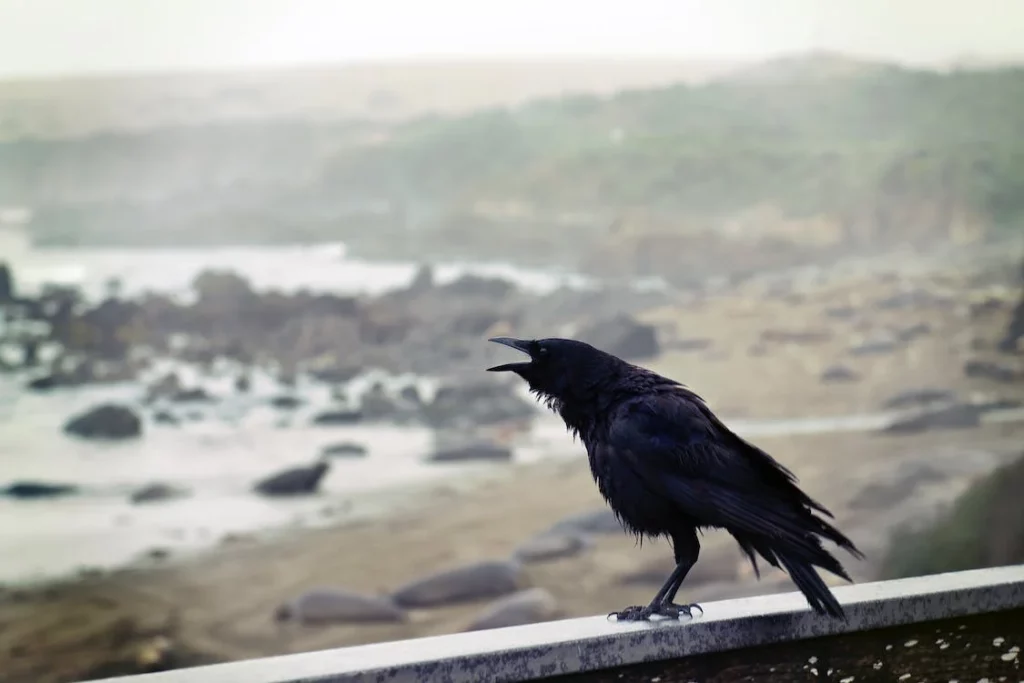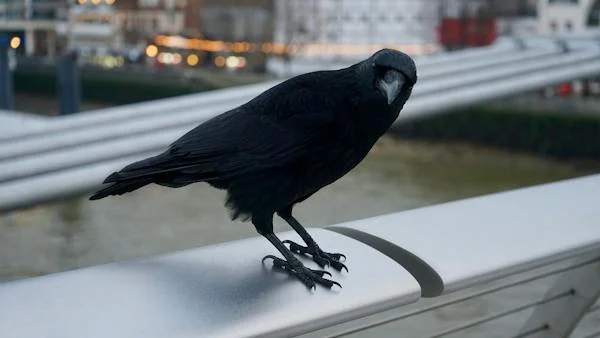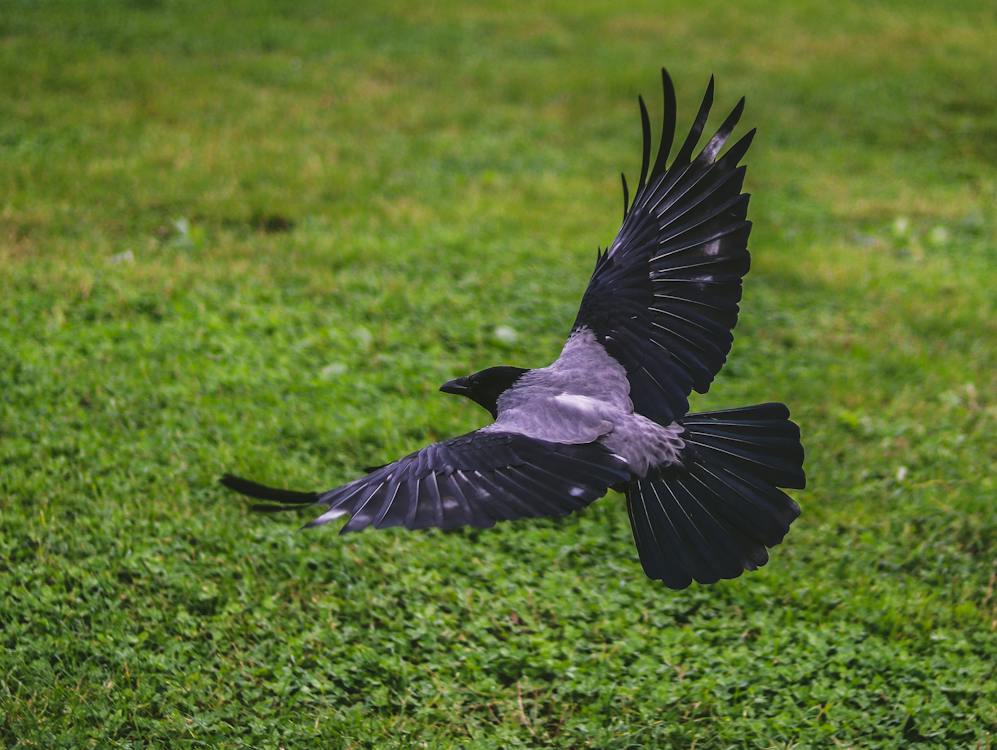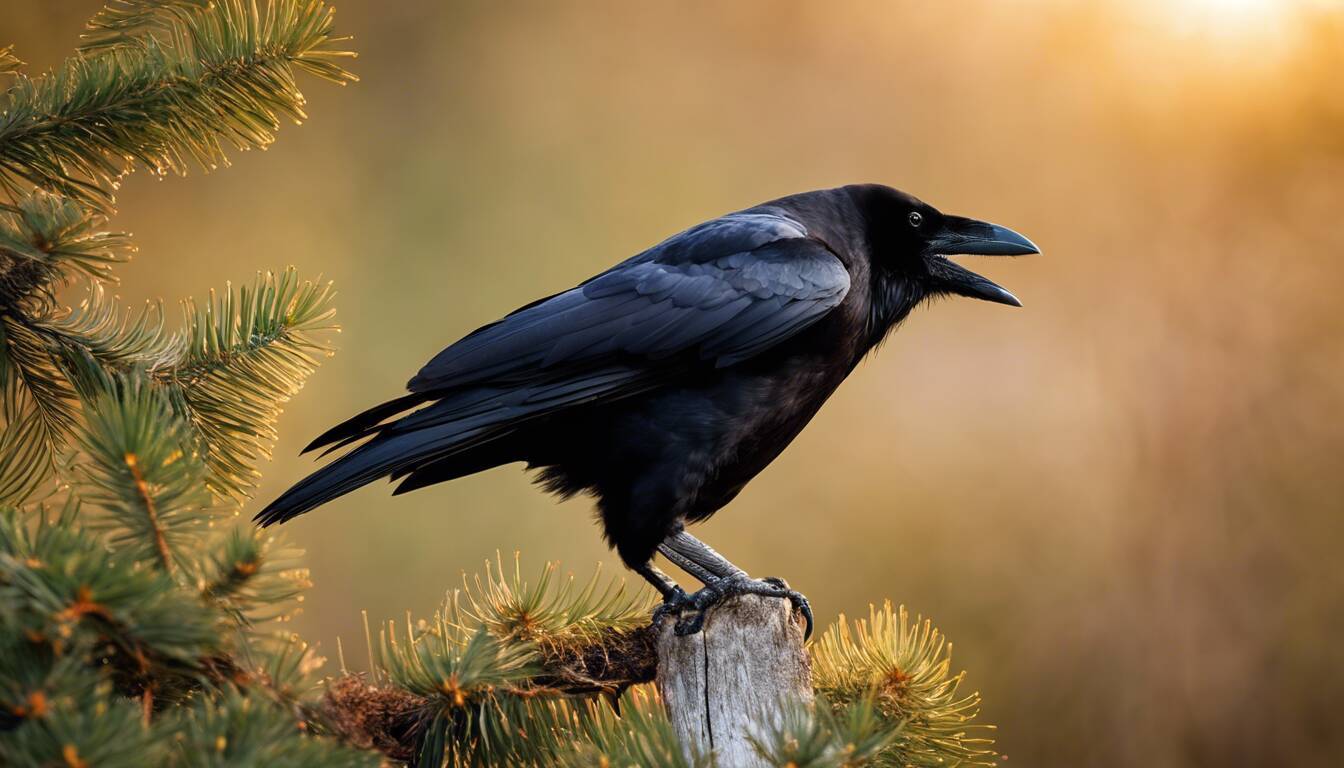Indeed, crows do have the capacity to mimic human sounds, but the way they “talk” is not as we might expect. These clever birds demonstrate this skill mostly when they are captive, mimicking limited words and phrases. However, out in the wild, their language takes a more diverse turn. They use many unique sounds – from coos to clicks, each for a different purpose. It’s like listening to a symphony that communicates emotions, territory boundaries, and alarms. Now imagine being part of that symphony – it’s loud yet beautiful. So let’s dive in and learn more about these vocal virtuosos of the bird world.
While crows can imitate certain sounds, they do not possess the ability to speak in human language like parrots or other vocal mimics. Their vocalizations are primarily used for communication within their own species and do not constitute human-like speech.
Can Crows Mimic Human Speech?
One of the most captivating aspects of the vocal abilities of crows is their potential to mimic human speech. It’s an intriguing concept, imagining crows repeating words and sentences like parrots do. While it’s true that crows possess impressive vocal skills, their abilities in mimicking human speech are more limited compared to certain other bird species. Research conducted in both captivity and in the wild has shed light on the extent of this capacity.
In captivity, there have been cases where crows have indeed mimicked human speech, but with a significantly limited vocabulary and comprehension. These instances often occur when crows are raised in close proximity to humans or other animals that vocalize frequently. The exposure to these sounds seems to influence the limited capacity for mimicking human speech in captive crows.
However, such mimicry is quite different from a deep understanding of human language. Crows might replicate specific sounds or words without necessarily comprehending their meaning or context, reflecting a gap between mimicry and true linguistic ability.
In the wild, while crows may engage in mimicking various sounds, including those produced by humans, their primary mode of communication involves the intricate vocalizations that enable them to convey a wide array of messages within their own species. The imitating of human speech by wild crows is less common when compared to their mimicry of natural sounds or calls from other bird species.
Imagine strolling through a park and hearing a crow mimic the sound of a car alarm or a musical tune. These instances exemplify how wild crows incorporate diverse environmental sounds into their vocal repertoire, contributing to their intricate communication methods.
Intriguingly, though crows’ capability to mimic human speech may not match that of parrots or some other birds renowned for this skill, it adds another layer of fascination to their already remarkable vocalization abilities, highlighting the complexity and diversity within the avian world.
Now, let’s delve into the nuanced diversities in crow vocalizations and explore the fascinating intricacies that shape their communication methods.
Diversities in Crow Vocalizations

Crows are renowned for their remarkable ability to communicate through a variety of sounds, each serving distinct purposes in their complex social structure. When we think about crow vocalizations, we often visualize the classic “caws” echoing across the sky. But these intelligent birds are capable of producing a wide range of vocalizations that go far beyond the familiar caw.
The diversity in crow vocalizations is truly fascinating. They produce a myriad of sounds, ranging from high-pitched coos and melodic calls to more percussive clicks and rattles. Each distinctive vocalization is adapted to serve various functions within the intricate web of crow communication. These vocalizations can convey warning messages to fellow crows, mark territories, express emotional states such as distress or excitement, or even coordinate group activities.
For instance, in Alaska, researchers have recorded distinct vocalizations from crows that exhibit territorial disputes or warnings to intruders. In California, different types of calls have been observed during feeding interactions and social gatherings. Florida has also provided researchers with recordings of unique vocalizations used during nesting behavior, demonstrating the regional variations in crow vocalizations.
This diversity in crow vocalizations supports the notion that these intelligent birds possess a sophisticated system of communication that mirrors that of some primates and marine mammals. Each sound carries specific information, allowing crows to effectively convey and comprehend complex messages within their social groups.
Understanding this rich tapestry of crow vocalizations not only sheds light on their fascinating communication abilities but also provides valuable insights into the intricate social behaviors and dynamics among crows.
With an understanding of the intricate vocal capabilities of crows, we now turn our attention to exploring their interactions with humans.
Interaction: Crows and Humans

Crows are more than just intelligent birds; they are highly adaptable creatures that have developed a complex relationship with humans. One of their most remarkable abilities is their capacity to recognize human faces. This isn’t just a casual recognition; it goes far beyond that. Crows have been observed displaying different behaviors based on their interactions with humans. For instance, they may associate specific people with sources of food, leading to a unique form of communication that revolves around shared resources.
This ability to remember and differentiate between individual human faces suggests a level of cognitive processing and memory retention that is truly impressive. Imagine a crow being able to spot you from the crowd and recall your actions! It’s almost as if they’re having conversations without uttering a word.
Since ancient times, crows have been intertwined with human culture and mythology, often being depicted as symbols of wisdom or intelligence in various folklore and stories. This ongoing connection showcases the depth of the relationship between crows and humans across different cultures.
In many urban areas, crows have adapted to coexisting with humans, creating an intricate network of communication based on behavior and mutual understanding. Some individuals have even reported forming personal bonds with crows, feeding them regularly and observing distinct, non-verbal forms of interaction develop over time.
This unique interplay between crows and humans raises intriguing questions about the extent of their understanding and engagement with our species. Their capability to establish these connections speaks volumes about their cognitive capacity.
The reciprocal relationships formed by crows with certain individuals demonstrate a profound level of communication that transcends mere vocalization. This is a captivating example of how these avian creatures navigate complex social interactions in their environment.
As we’ve seen, the interactions between crows and humans are far from ordinary—they represent a fascinating insight into the depth of avian cognition. Now, let’s explore the next intriguing aspect of crow intelligence: their varying levels of problem-solving skills.
Intelligence Levels in Crows

Crows have long captivated our curiosity with their unexpected abilities for problem-solving and their capacity for complex tasks. Their impressive brain-to-body ratio, including a pronounced forebrain, is associated with statistical and analytical reasoning in humans. This adaptation and cognitive ability have piqued the interest of researchers and animal behavior enthusiasts worldwide.
Their remarkable skills don’t stop there—crows have displayed a level of self-awareness that is truly exceptional among animals. This observation has led many to marvel at their ability to adapt to new situations and learn from their experiences. It’s almost as if they possess a unique form of wisdom that allows them to navigate their environment with remarkable precision.
In fact, studies have shown that crows are capable of using tools to solve problems, such as using twigs to extract bugs from tree bark. This level of ingenuity and adaptability is a testament to their remarkable intelligence and the extent to which they can manipulate their surroundings to meet their needs.
Dr. Melissa Johnston and her team conducted an intriguing experiment where they trained crows to peck at various images on touchscreens to earn food treats. The introduction of the concept of probabilities to the crows, teaching them unique pairings between images on the screen and the likelihood of obtaining a reward, showcased their capacity for statistical reasoning and understanding abstract concepts.
This suggests that the cognitive abilities of crows are far more advanced than previously thought. Their numerical competence, abstract thinking, and careful consideration during decision-making highlight the depth of their cognitive prowess. These findings provide significant insights into our understanding of the evolution of intelligence and problem-solving capabilities among avian species.
As we continue to uncover new discoveries about these fascinating creatures, the allure of understanding their intelligence only grows stronger.
The Limits of Crow Communication

Crows are indeed known for their impressive vocal and communicative skills, but it’s important to recognize that their abilities have limitations, especially when it comes to understanding human language. While crows can produce a wide range of sounds and calls to communicate with each other, their comprehension of human language is relatively limited. When we speak, the sounds and words we use may not hold any specific meaning for crows.
Social Dynamics vs. Human Language
Crow communication primarily revolves around social dynamics within their own species and their environment. They use different calls and body language to convey various messages related to food sources, potential threats, or territorial boundaries. This type of communication is crucial for their survival and successful navigation in their ecological niche. However, when it comes to understanding human language, the context and meanings are vastly different, posing a challenge for crows to interpret our verbal cues.
Moreover, the limitations of crow communication also extend to their cognitive capacity. While crows demonstrate remarkable problem-solving skills and cognitive flexibility within their natural behavioral repertoire, deciphering complex linguistic patterns that go beyond their innate communication systems is not within their capability. Understanding these natural boundaries provides valuable insight into how crows perceive and interpret the world around them.
The Intricacies of Human Language
Human language is incredibly complex, incorporating syntax, semantics, and contextual nuances that go far beyond basic vocalizations and cues. Crows, like many other non-human species, lack the advanced cognitive framework needed to fully comprehend the intricacies of human language. Their focus is on survival within their ecological community rather than engaging in dialogue across species boundaries.
Understanding these limitations doesn’t diminish the extraordinary communicative abilities of crows within their own social and environmental contexts. It simply underscores the distinct differences between human language and the intricate communication systems present in non-human species.
By acknowledging the constraints of crow communication, we can appreciate and respect the unique ways in which these intelligent birds interact and convey information within their own communities and environments.
Controversy over Crows’ Talking Abilities
The idea of crows mimicking and understanding human speech sparks intense debate within the scientific community. Some researchers believe that the anecdotes and videos showing crows appearing to speak words are just instances of them repeating sounds without actually understanding their meaning. They argue that the crows may not comprehend language in the way humans do, instead, they might be imitating sounds they’ve heard without grasping their significance.
On the other hand, some scientists argue that crows might possess a deeper level of comprehension beyond simple mimicry. These researchers point to evidence from controlled experiments where crows appear to use human-like syntax, suggesting an understanding of some aspects of language structure.
For instance, in a study conducted by researchers at the University of Washington, New Caledonian crows were trained to use vending machines by using tokens as a form of currency. They quickly learned to exchange tokens for food and even demonstrated the ability to teach this behavior to other crows. This kind of complex learning demonstrates a level of cognitive ability far beyond mere mimicry.
The controversy doesn’t end here; it extends to whether crows possess the anatomical and neurological capabilities to produce human-like speech sounds. While they may not have the same vocal apparatus as humans, some scientists argue that with exceptional vocal control, crows are capable of imitating human speech with surprising accuracy.
It’s important for our readers to understand these controversies as they provide a deeper insight into the complexity of crow communication. However, more research is needed to definitively resolve these debates and determine the true extent of crows’ linguistic abilities.
Interested readers can explore more information about this intriguing topic on our website, which delves deeper into the ongoing debates surrounding crow communication and offers insights from leading experts in the field.
As research into the fascinating world of crow communication continues, it’s clear that these intelligent creatures have much more to reveal about their abilities and complexities.
Related Resources:
